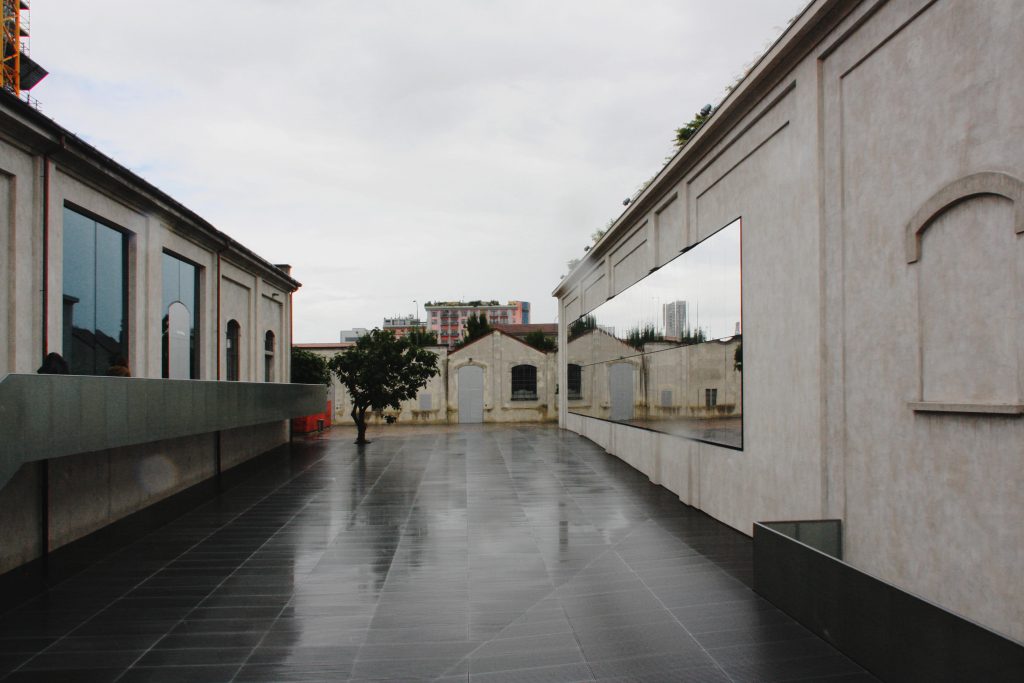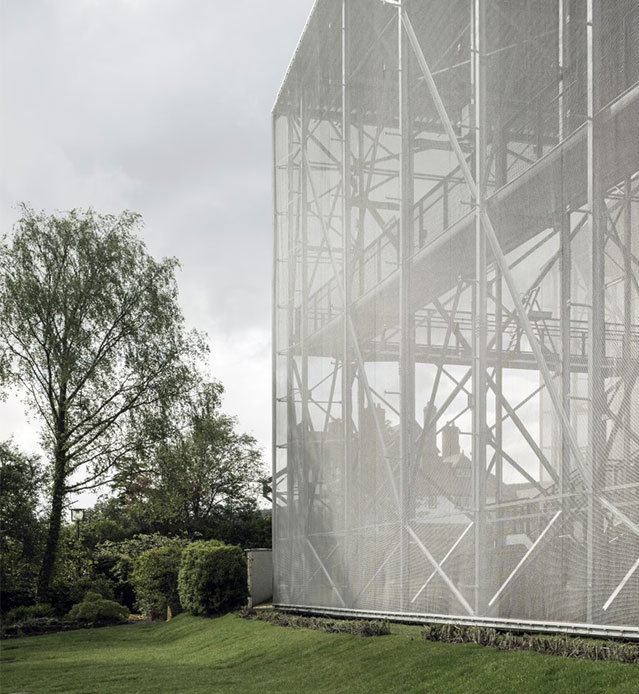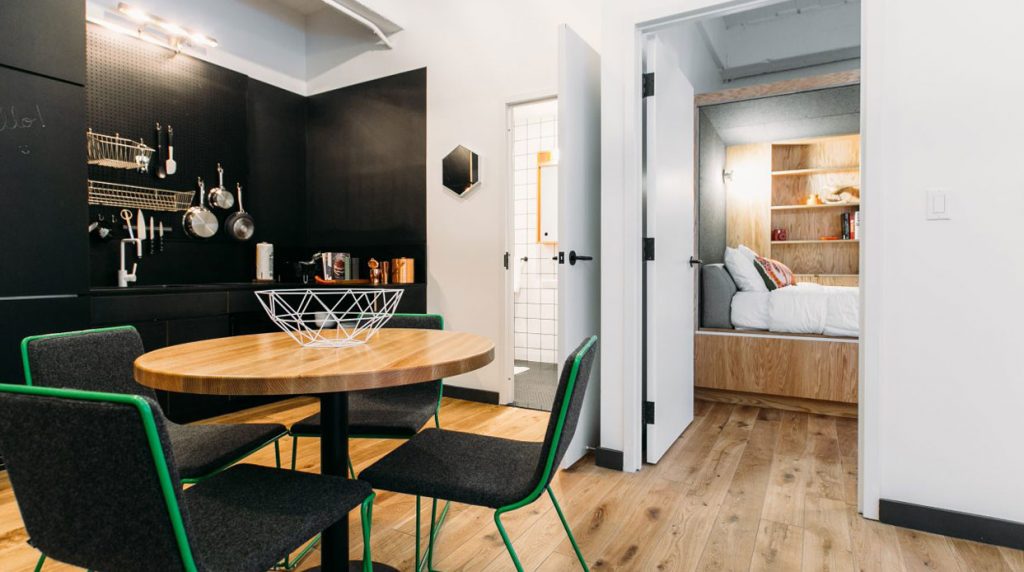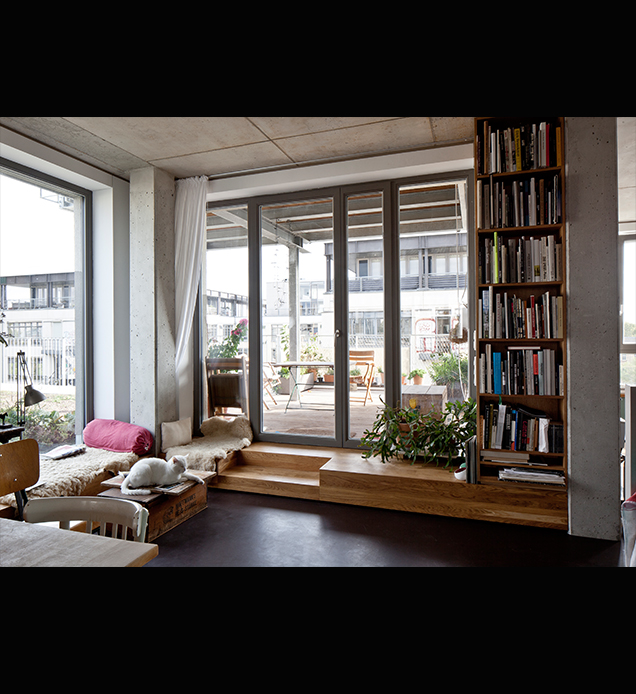Fondazione Prada – OMA
It was the middle of April when I arrived in Milan and it had been raining for a few hours.

: Milan, Italy
: Rem Koolhaas, Chris van Duijn, Ippolito Pesetelli
: Fondazione Prada
: 2015–2018
: Federico Pompignoli
: 18.900 sqm
: Maria Tase, Ilinca Pop, Livia Ionescu
Sequences from an Incomplete Foundation – Maria Alexandra Tase
It was the middle of April when I arrived in Milan and it had been raining for a few hours. I took the subway and then a tram to get to the outskirts, an industrial area with contemporary art galleries and recently opened – but renowned – cafes. You would think it’s a cliché: large cities with fully crowded central areas and faraway neighbourhoods revived by some successful reconversion. Fondazione’s presence was discernable from the Porta Romano station, an old train station turned into a depot that signals that you have left the typically Milanese neighborhoods for an area with no tourist attractions. This is where a lot of factories and small businesses have sprung up in the years after the war, idle factories or, on the contrary, very active ones that still produce textiles and furniture. I had found out about the latest OMA project at Koolhaas’ conference at the Milan Triennale in 2014, when Fondazione was only a sketch. It seemed like the dawn of a new way of thinking about Architecture, and a rehabilitation of the latter’s position in a world that no longer holds any surprises.
How could Architecture still take anyone by surprise anymore when it has already taken all shapes and sizes and offered so many rules? The novelty of this project lies specifically in the fact that it doesn’t come up with a new architecture and it isn’t an attempt to preserve some existent buildings from the 19th century either. It rather seems to be a confirmation of already existing hypotheses: a collection of disparate fragments that lacks a compositional rule meant to unify the pieces into a single image, as well as any attempt to establish relationships of dominance between buildings. The volumes function independently, regardless of the fact that they are old or new, that they expand vertically or horizontally, that they are narrow or generous. The introduction of so many spatial variables – that enhance the complexity of the project – relegates architecture to the background, letting art play the most important part.
Koolhaas then raised a very topical issue: architecture – between challenge and comfort. Very often the architectural space suffers as a consequence of attempts to lure people, to make them stay, subsequently to make such spaces seem welcoming, comfortable, to induce a feeling of safety. On the other hand, this project attempts to distance itself from a certain visual and picturesque comfort and adopts a rougher perception of industrial space, even though the syntax of the existing buildings is a rather classicist, melancholic and poetic one. Though discreet, the intervention emits a powerful energy that goes far beyond the high concrete wall which limits the precinct.
Finally, a non-auto-referential architecture, but one which stands out through a different dimension. This isn’t about the kind of building you are looking at. It is rather an invitation to an experience. I always imagined museum visitors as difficult and sophisticated people, well aware of what’s what. Surely, the abstract art and installation that were to be exhibited here also influenced the way in which the intervention was designed. At that time, the white corner tower had not been finished and Anish Kapoor’s exhibits were not installed. One could see the cranes, but neither rain, nor the entourage allowed me to approach the building site. Back then I thought what I was seeing was only one additional shape and all the attention will be focused on the vacant space among the distillery’s buildings and the tower painted in 24 K gold – a famous object that worked as a statement for the museum itself and intrigued many critics. However, my fascination with the exterior was definitely supplemented by the gradually revealed installations inside. I refused to read the description pertaining to each exhibit beforehand, so as to have more time to judge everything from a personal point of view, and then confront it with the artist’s message.
Face to face with the madman
My experience at Fondazione started with the Podium, a generous place of low height, one that exposed only Macuga with «Son of Men who Ate the Scroll.» At first I thought there was an insanse guide whose voice I was hearing, but as I got closer I discovered a robot, a neo-Jesus, wrapped in a white shroud, with a transparent plastic coat and wearing rather awkward shoes. His facial expressions, blinking, beard, warm voice, hand gestures and messages about redemption made me doubt the coherence of my own thoughts at that moment, more so as I found myself seated on a bench, face to face with the madman. Actually, he was an android-prophet. He told me with great ease that man is the only being capable of selfdestruction. His speech was a little bit too serious and too freudian, considering the way my day had started, but before I realised he was mimicking the role of the ancient prophet, I found myself insistently and indescreetly staring at this Manmade Man. A modern Frankenstein, a sci-fi hero, a product that exhibits the simultaneous contradiction between truth and lie (human-robot).
The steps of a few visitors made an echo on the stone floor and I felt compelled to leave the bench facing the humanoid, to allow others to feel cold sweat streaming through their pores while watching him. Only as I turned away from him did I become conscious of a first meeting with an almost-human. This fact prepared me for another exhibit signed by Goshka Macuga, «Before the Beginning and After the End», which, by way of the same frankness, depicts the myth of Creation. I finally reached Cisterna, where I found an installation with 73 bronze heads of the brightest minds in the world. They were connected by metal bars like diagrams or potential dialogues between Foucault, Schwartz, Einstein, Freud, Marx, Lincoln, Socrate, Platon etc.
The Scenography behind the architecture
Everything felt staged. It was not architecture. Dressed in mirror, Cisterna disappeared when viewed towards the parapet wall that perfectly reflected the sky. The sun was coming out of the clouds and the golden tower became more and more yellow, contrasting with the other metal halls. Here, OMA detached itself from automonument architecture and reevaluated it through strength and program. It is obvious that such projects are meant for exposures, instead of competing with them. Bar Luce would have fit into a symmetrical and carefully studied scene from Grand Hotel Budapest. Wes Anderson’s obsession for perfection led to the creation of neorealist images of the Milanese classical style, bordering on kitsch. In the end, Fondazione Prada is an intervention tied to ambient and materiality, with no intention to nostalgically reconstruct the past. It demythologizes the sacred image of an old building, being more of a brutal excavation of existence as well as the occasion to imagine new perspectives and interpretations.
Translated by Vlad Brătuleanu
 Romană
Romană English
English









